It may not seem much like it now, but the Haining St / Frederick St area is brimming full of remnants of an interesting characterful heritage past. It is in a state of change again right now, with the small-scale light industrial aspects of its past being removed, and a transplanting of a new wave of immigrants in the next phase of its life, with extensive apartment living. Originally, of course, it was Maori land, possibly papakainga food gardens but probably mostly swamp: muddy ground where eels dwelt amongst the harakeke. Courtenay Place itself is built on nothing more than mud, but most of Te Aro is much the same, with the evidence of many small winding streams working their way down from the hills to the harbour.
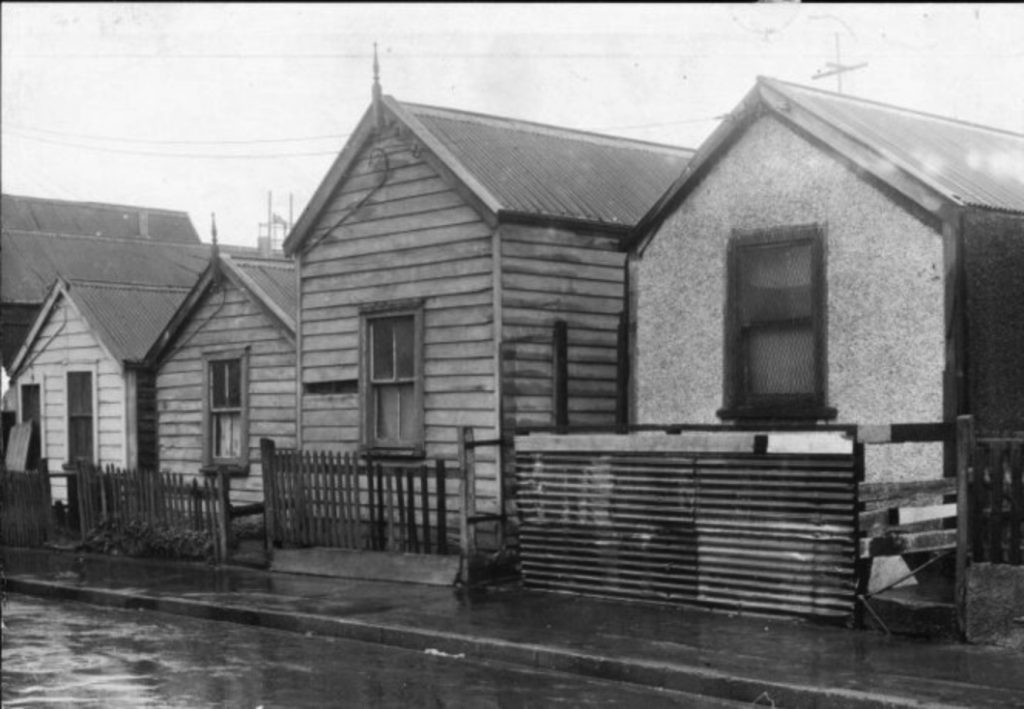
Early photographs show the area as working class sprawl – nothing particularly lovely. Nearby were industrial uses, like the City Compactor, Refuse dump, Town Gaol and later Barracks, Gas Works, etc – and the human lives that washed up there to service it. Te Aro it seems has always been the backwater of the city as it grew, and so while the finest of people had enough finance to live on the vertiginous cliffs of Mount Victoria or to huddle near the base of the Tinakori Hill, the rest of us had to content ourselves with the flatlands of Te Aro. And while all of Te Aro was a working class neighbourhood, covered with one or two storey high shanties, two streets in particular became known as the heart of Chinatown. It wasn’t just Haining Street and Frederick Street of course, there are signs of the Chinese community everywhere around Martin Square, Marion Street, Vivian Street, Wigan Street and Cuba Street. A lot of the information I’ve gathered here came from a local woman Lynette Shum, who has taken a series of walks around Wellington over the years, opening up the Chinese secret haunts of the past. She’s published a book on the subject, but I can’t find my copy right now – perhaps someone can point me to it.
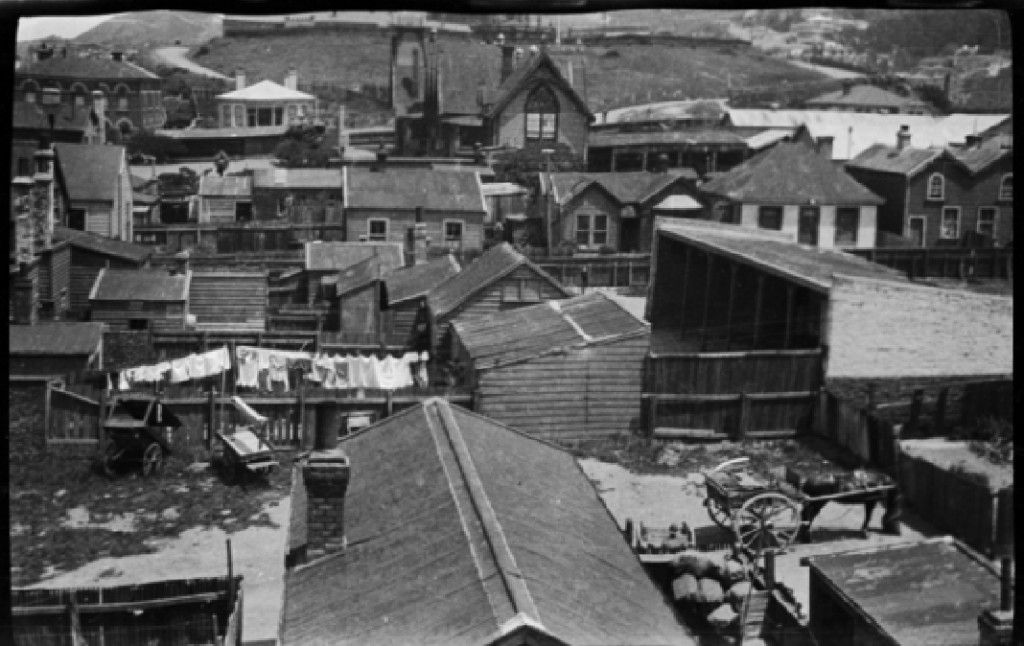
Haining Street in particular seemed to have a bad reputation, as it was “known” to be a den of inequity, allegedly involving drugs, prostitution and gambling. Nowadays all those things are legal – in particular, the dreaded Chinese addictive game of Pakapoo involved picking 6 numbers from a list of 40 numbers… now known as government-sanctioned Lotto for the masses. Let’s face it: the simple reality is that there was just a lot of anti-Asian racism in those days, which to be honest, has not yet completely gone away. But in reality, the Chinese community here was quite a proud community, and was working very hard to improve its reputation. Witness the institutions of the Tung Jung Association (built 1926), and the Chinese Masonic Society (or Chee Kung Tong, built 1925), as well as the Christians at the Chinese Mission Hall (built 1905), all still with buildings existing in Frederick St, although none with their original purpose of course. The Chinese people themselves have largely moved on.

Part of the reason they have moved on is probably due to the appalling actions of one white British man, who in the spirit of Christchurch I will keep nameless. He simply walked up to a perfectly harmless elderly Chinese man and shot him dead in cold blood, later handing himself into the Police and quite proudly saying that he had done this act. I think he thought that he deserved a medal for his actions. Locked up in a lunatic asylum for the rest of his days, he probably deserved a worse fate for this outright murder.
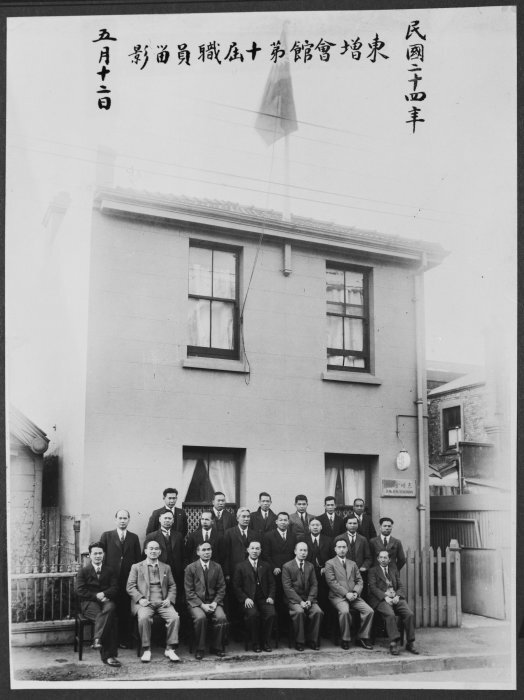
But the Chinese themselves did not entirely abandon the area until comparatively recently. On Shum’s walk and talk she showed pictures of the Chinese businesses that stayed on in the area until the 1970s, including greengrocers, laundries, and other shops catering mainly for the Chinese market. But the relentless tide of gentrification sweeps on, and towards the middle of the 80s, the last of the Chinese businesses moved on. I’ll continue this more in the next post, next week.
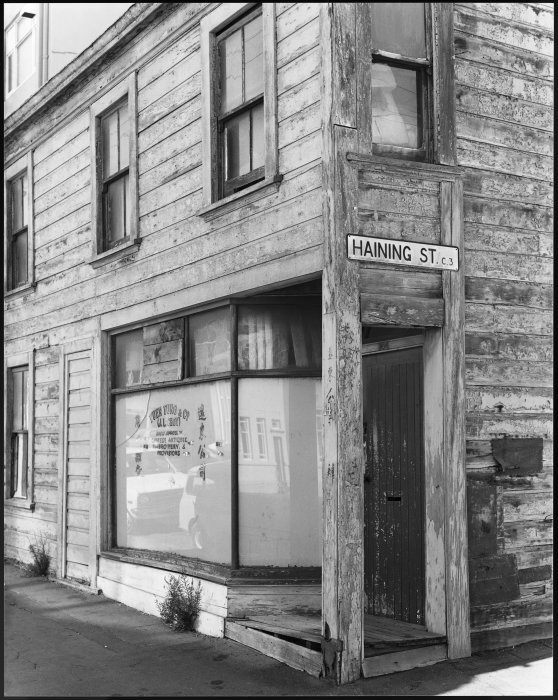
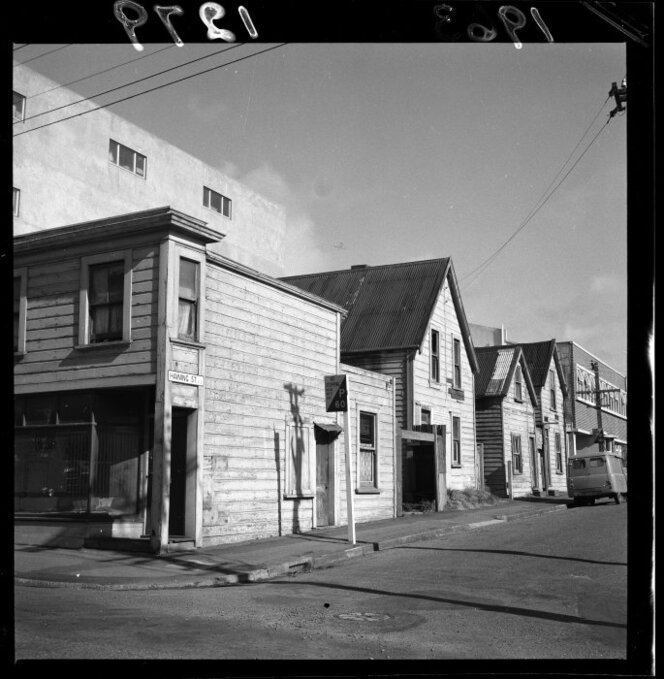





FYI: Lynette Shum and other related portraits http://blog.naturespic.com/2020/09/03/recent-story-portraits-done.html
Thanks Rob – nice portraits – well done. The room at the Poon Faa Association is fascinating isn’t it? It seems to be the home of all the Chinese groups in Wellington these days, and presumably has all the records of things like the Chinese Masons etc – some banners on the wall etc. But I’ve never seen anyone go in or out of there. Mysterious.
Fascinating history that deserves more recognition.
In regards to the terrible fate of Joe Kum Yung, you can still find a small commemorative plaque in front of the print shop next to the Bible society building. (the two level building on the far right of the last image posted) You can also see it on OpenStreetMap.
Thanks Vee – that brick building was the Bible Society ? Interesting – didn’t know that. I think the building on the corner of Tory and Haining is now the place to buy a bible. Window is full of them. Downstairs of that 2 storey slick modernist brick building is a printer – maybe they even printed the bibles downstairs?
Loving these historic photos Nemo – especially the 1924 shot of the Chee Kung Tong – the Chinese Masonic Society – marching down the street. A lone policeman standing guard, just in case there was mischief. Bored schoolgirls and schoolboys watching idly on the footpath, a few local flat-capped men observing too, and an old Model T Ford or something like that in the background. A hot summer’s afternoon – long shadows, baking hot, dusty in the shadows. Beautiful photos.